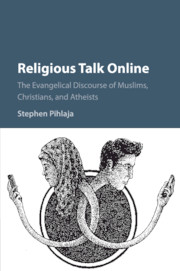Book contents
References
Published online by Cambridge University Press: 19 February 2018
- Type
- Chapter
- Information
- Religious Talk OnlineThe Evangelical Discourse of Muslims, Christians, and Atheists, pp. 171 - 184Publisher: Cambridge University PressPrint publication year: 2018

